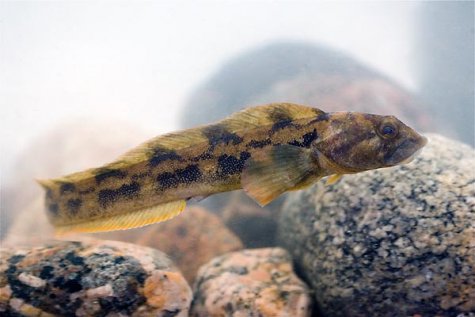"Mother of eel"
Text, photo and video Tiit Hunt, www.rmk.ee
Translation Liis
Eelpout or blenny
Vivpaous eelpout; blenny Emakala or kiviluts Zoarces viviparus
You will not see this fish in stores, and many have never heard of its existence. The official name of the creature is eelpout and it reminds a little of a burbot. Among people living on the coast the little fish with its thick lips and bulging cheeks is often called rock burbot, kiviluts, besides other names.
Among the fish of the Baltic the fact that it gives birth to live young fry makes makes it special: it is the only viviparous fish species in these waters. The female will not drop her roe somewhere between the rocks on the sea bottom; the male fertilizes the roe grains in her body. There the fry develop securely from the roe grains and immediately after birth they are capable of leading an independent life.
Now is in fact the peak period of giving birth for the females. Depending on the size of the fish an individual may give birth to some ten up to a few hundred fry.
As late as in the middle of the 18th century when nothing as yet was known of the unique life history and propagation of eels in the Sargasso sea it was thought that the fry of eelpout developed into eels. The one-time idea of the biology of eels is mirrored in the German name of the eelpout even today – Aalmutter, the mother of eel.
In our marine waters the eelpout is a numerously occurring fish; it is common in the eastern part of the Gulf of Riga, between Kihnu and Ruhnu and in the Gulf of Finland. There are less of them in the Väinameri. Now, after the violent storm winds you may see at the edge of the seaweed banks on the shore some eelpouts too besides the washed up sticklebacks.
In Estonia we are not used to eat the delicate eelpout; in Latvian cuisine however it is used for highly appreciated dishes. Perches, cod and other predatory fishes feed happily on the eelpout and it is a favourite food of cormorants.
Cormorant with eelpout









